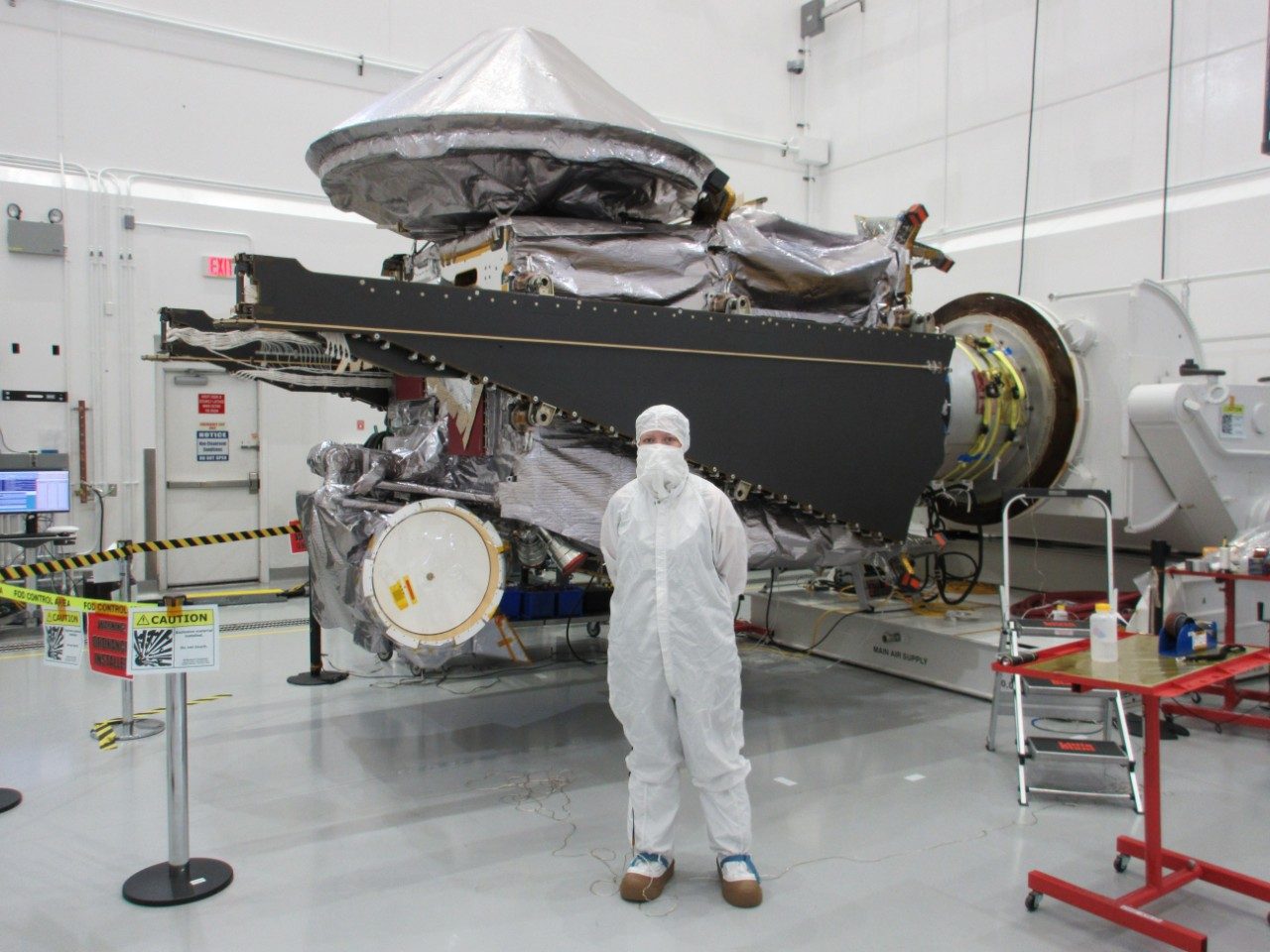When a one-of-a-kind, record-breaking mission is chosen by NASA to venture into deep space, a lot of planning (and excitement) takes place. Everything from developing the spacecraft design to determining the trajectory and flight path goes through several processes to ensure mission success. But engineers and scientists also need to decide which instruments to send and ensure that they get along during the ride.
Emily Brisnehan, Lucy’s instrument accommodation systems engineer, works to ensure that the instruments on the spacecraft work in harmony with each other and the spacecraft. “Mechanically, electrically, software, all of that. I make sure that everything is going to play nicely together,” Emily says.
Instrumenting a Spacecraft
Lucy is unique in that it will visit eight asteroids over its 12-year mission into deep space. The record-breaking journey to these ancient relics of the early solar system could unlock the keys to how the planets formed billions of years ago. To shine a light on these mysteries, Lucy is equipped with three vital instruments: L’Ralph, L’LORRI and L’TES.
“L’Ralph, is the primary instrument and takes images of the asteroids on the visible and infrared spectrums,” Emily says. L’Ralph will allow scientists to determine what the Trojan asteroids surfaces are comprised of as they look for ice, minerals and other materials.
Next up is L’LORRI, or the long range reconnaissance imager. “That's like a big telescope that's going to get us nice pictures and show us what the asteroids actually look like.”
Finally is L’TES, the thermal emission spectrometer. “L’TES is going to be looking at the temperatures emitted by the asteroids to understand its surface properties.”
These instruments are actually built upon previous iterations that were used by other Lockheed Martin-built spacecraft including the recent OSIRIS-REx spacecraft among others. The “L-apostrophe” simply denotes that these instruments have been upgraded and improved for Lucy. Emily and the Lockheed Martin team ensured that these three instruments were all integrated onto Lucy’s instrument pointing platform (IPP) in such a way that they don’t interfere with one another while onboard.

Getting Along for the Ride
Now that the instruments had been chosen and their purposes set, it was then time to get the IPP mounted onto the spacecraft, which wasn’t necessarily easy. As Emily says, “Each of the payloads have their different ways of functioning and have different expectations.” Emily worked to ensure that any challenges that one instrument might experience didn’t impact the rest of the spacecraft, and that the spacecraft doesn’t impact the instruments. “We want this whole thing to work together, but there's a lot of those little details along the way that have to all align."
The team from Lockheed Martin worked alongside teams from NASA’s Goddard Space Flight Center, the Southwest Research Institute, Johns Hopkins Applied Physics Lab and Arizona State University. “My favorite thing is working with the different teams that have spent years on these instruments,” Emily says. “Seeing it go from a vision of what they want to see to actual physical hardware, bolting it down to the spacecraft and seeing that data come through—the whole thing has been pretty satisfying.”
Challenging Expectations
Emily’s journey to becoming a spacecraft engineer started when she was young, though getting into the world of engineering wasn’t exactly what she expected. “I don't think I imagined exactly where I'd be. I always loved space. I always loved science. But I didn't really know much about engineering until I got to college.” Emily’s academic path took her through aerospace engineering, which ultimately brought her to Lockheed Martin.
Her advice to those looking for an opportunity to challenge their own expectations is to simply get involved. “It's such a big world,” Emily says. “There's so much out there. I recommend trying different things and finding your interests. It's never too late. There are still tons of things that you can do.”




